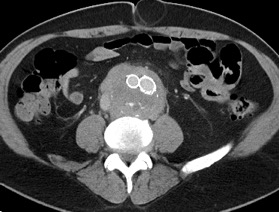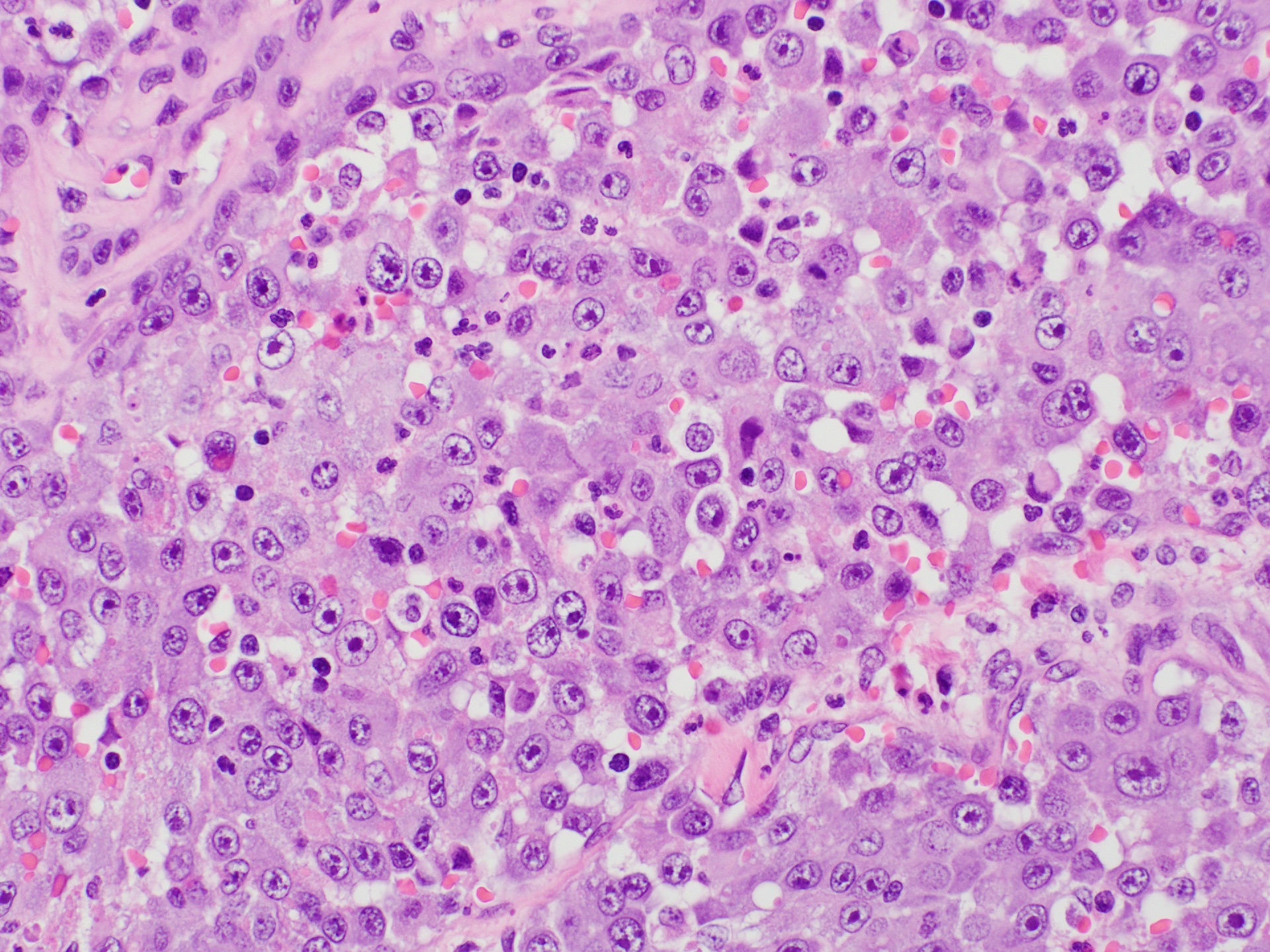Angiosarcoma of the Abdominal Aorta after Endovascular Aneurysm Repair
Brett Aplin, Patrick Yu, William Omlie, Amy B Reed
University of Minnesota / Fairview, Minneapolis, MN
INTRODUCTION: Angiosarcoma of the abdominal aorta is an extremely rare malignancy usually discovered incidentally on tissue resected at the time of open aortic repair. We present a case of angiosarcoma presenting as an infected EVAR.
METHODS: A 68-year-old male with a history of chronic lymphocytic leukemia presented to the Emergency Department with a two-week history of fever, low back discomfort, and abdominal pain. Past medical history was significant for EVAR four years prior and a known Type II endoleak that had been managed with surveillance. Admission laboratory evaluation revealed leukocytosis (WBC 23 X 109/L) with a left shift, elevated c-reactive protein (72 mg/L) and elevated erythrocyte sedimentation rate (90 mm/h). Multiple sets of blood cultures were negative. CT findings (Fig 1) were notable for aortic wall thickening with surrounding lymphadenopathy concerning for infection. A tagged white blood cell scan was negative for infection. Despite institution of empiric broad-spectrum antibiotics, the patient continued to have leukocytosis and pain. Given the concern for endograft infection, the patient underwent explantation of the EVAR, reconstruction with aortoiliac cryograft, and wide local debridement of the aortic wall including adjacent necrotic lymph nodes.
RESULTS: Significant periaortic inflammation with lymphadenopathy was noted at the time of operation without frank purulence. Intraoperative cultures were negative. However, the aortic wall pathology was significant for a 4.2 cm epithelioid angiosarcoma, present at the margin, with foci of lymphovascular invasion (Fig 2). The patient recovered well from the operation. However, he is considered to have a very poor prognosis from the angiosarcoma and has initiated palliative radiation therapy.
CONCLUSIONS: Although EVAR is considered the gold standard for AAA repair in patients with suitable anatomy, there are trade-offs associated with less invasive approaches compared to open repair. This case highlights the missed opportunity for aortic tissue biopsy in a patient with a rare vascular malignancy. The late but vague clinical presentation delayed diagnosis and potentially allowed disease progression leading to a poor prognosis. 

Back to 2019 Abstracts
